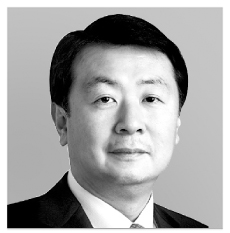Reykjavik worked, eventually

The author is an editorial writer of the JoongAng Ilbo.
Did the second North Korea-U.S. summit in Hanoi, Vietnam, really end in catastrophe? When the White House announced no agreement was made during the summit last Friday, numerous media outlets from around the world likened the meeting to the Reykjavik summit of October 1986, held in Iceland between U.S. President Ronald Reagan and Mikhail Gorbachev, the general secretary of the Communist Party of the Soviet Union. The two summits were alike in the sense that the leaders involved failed to reach any agreement before or after they sat down.
Reagan and Gorbachev kicked off the summit without reaching an agreement beforehand since the meeting had been hastily arranged. Gorbachev proposed they meet to discuss nuclear arms reduction, to which Reagan accepted right away. They sat across from each other 11 days after Gorbachev’s offer of talks. There wasn’t enough time for working-level negotiations and agreements.
At the beginning of their meeting, it appeared they were heading for a great compromise. But one point of major contention was the U.S. Strategic Defense Initiative (SDI). Reagan insisted Gorbachev acknowledge his country’s development of the missile defense shield and offered to share the technology with the Soviets, but Gorbachev refused and the summit collapsed. At the time, critics pointed out the danger of pushing for a summit at breakneck pace, calling the Reagan-Gorbachev meeting a failure.
Nevertheless, the leaders didn’t return home completely empty-handed. Their greatest achievement was that they both learned of each other’s willingness to reduce nuclear arms, as well as what the other side wanted. Gorbachev eventually decided to receive the missile shield technology from the United States, and, in February 1987, traveled to the United States to sign the Intermediate-range Nuclear Forces (INF) Treaty. Looking back, we can’t say the Reykjavik summit was a complete failure. Rather, it served as a steppingstone to reach the ultimate goal.
The Hanoi summit between U.S. President Donald Trump and North Korean leader Kim Jong-un could lead to similar results. But there’s a condition: Pyongyang must make a concession. As Trump walked out of the talks, he was almost certainly not going to change his mind about his demands. Back at home, Trump is being widely supported for his decision to not sign a deal. In the meantime, he has several other issues to tackle, including the Russian scandal, the trade war with China and the building of a border wall. That means he will be unable to focus on the North Korean denuclearization issue for the time being.

In a nationally-televised speech to mark the centennial of the March 1, 1919, Independence Movement, President Moon Jae-in said his administration will discuss the resumption of the Kaesong Industrial Complex and Mount Kumgang tours with the United States. [NEWS1]
There’s only one way for the Hanoi summit to follow in the footsteps of the Reykjavik summit: Pyongyang must promise the complete demolition of its major nuclear facilities, including Yongbyon and the uranium enrichment plant in Kangson.
Like domestic politics, international relations are a living organism. Even the slightest change of circumstances can provoke an unpredictable change of course. One U.S. reporter I met in Hanoi expected the North Korean leader to grow hesitant about striking a deal with Trump. With chances for Trump’s re-election growing slimmer, Kim would probably try to hit a home run with whoever becomes the next president, the reporter suggested.
Taking note of the precedent that former U.S. President George W. Bush flipped his predecessor Bill Clinton’s policy of appeasement with North Korea, there’s a high chance Pyongyang would evade making a deal with Trump.
The possibility of Trump and Kim reaching some sort of great compromise will shrink over time. It is time for Moon to persuade Kim to scrap the Kangson uranium-enrichment facility as well. The sooner, the better.
JoongAng Ilbo, March 5, Page 30










with the Korea JoongAng Daily
To write comments, please log in to one of the accounts.
Standards Board Policy (0/250자)